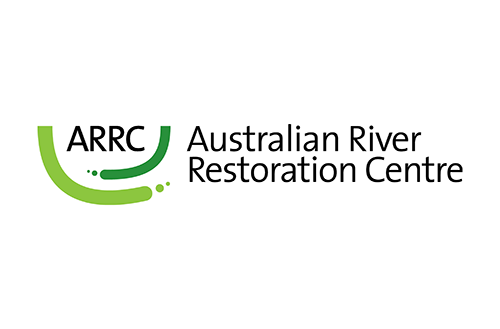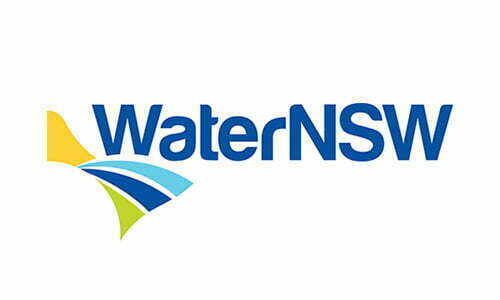Warning if you have just eaten lunch! Contains many faecal-related words.
Poo is harming our waterways and making animals, humans and our environment sick. Zoonotic pathogens are the harmful bugs that live inside organisms and can spread from animals to humans. They are a broad group and encompass parasites (protozoa), bacteria and viruses. They have a significant impact on water quality once they have entered our river systems. Cattle that have access to riparian areas pollute waterways with their dung and the pathogens that live in their faeces. Pathogens can live in animal faeces for up to seven months.
Animal faeces and its pathogens flowing into river systems can create many issues, such as:
- spread of disease and parasites that affect both stock and humans.
- water that is no longer fit for use or consumption.
- and extensive algal growth.
What are pathogens?
Pathogens in non-native animal poo, like in cow faeces, are transferable to humans, whilst native animal poo pathogens are not as harmful to humans or our environment. These pathogens can cause diseases known as ‘faecal-oral’ diseases, which mainly occur through contaminated faeces coming into contact with a person directly or indirectly through a waterway. A study by Manyi-Loh et.al (2016), found that the most common pathogens in cow faeces are bacteria such as; Escherichia coli (E.coli), Salmonella, campylobacter and Listeria monocytogenes, which can all have severe consequences if ingested by humans.
Another study by Cox et al (2005) measured the presence and quantities of pathogens in the Sydney region catchment in many different native wildlife and introduced domesticated animals. This revealed that in particular, bacterial spores (C.perfringens), parasites (Cryptosporidium and Giardia) and enteric viruses (human viruses transported by the faecal-oral route) were found in much higher concentrations in domestic animals than in native animals.
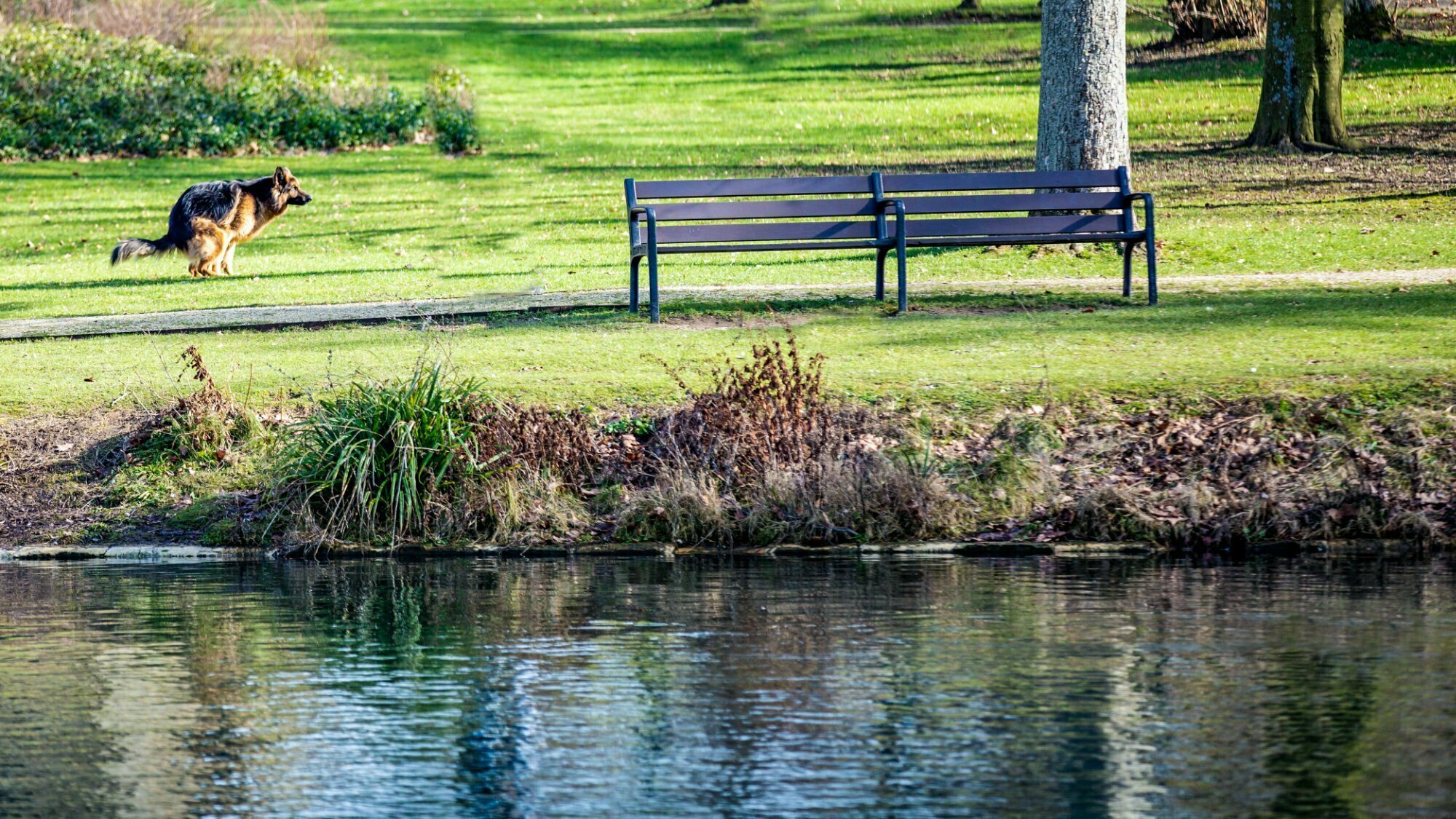
These bacterial and viral pathogens all have the potential to cause significant harm to humans when passed through waterways. It should be noted that harmful pathogens exist in native animal poo, however, the actual quantities are too small to be detected by normal measurement methods and baselines, which indicates that they are not harmful to waterways or humans, compared to cattle or other domestic animals.
The difference between bacteria and viral pathogens:
- Bacteria are free-floating, living single cells that live in many places – soil, water, plants, human and animal bodies. They can cause infections if they enter a body and start to reproduce.
- Viral pathogens (viruses) differ from bacterial pathogens as they are not living organisms. They can grow and reproduce by hijacking their host organism’s cells reproducing functions.
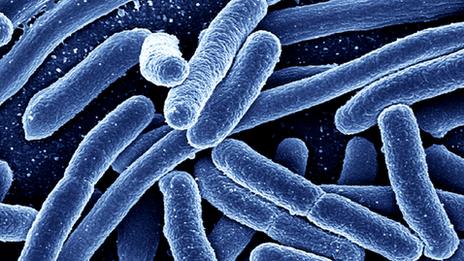
E.coli
E.coli is the most notorious bacterial pathogen that can be found in cattle faeces. It produces a potent toxin that can have serious consequences for our health. The study by Manyi-Loh et al (2016) found that E.coli is present in 16% of all cow faeces, which means it is the most likely pathogen to contaminate our waterways if it washes into rivers. E.coli can survive up to 100 days in cow poo sitting in paddocks or waterways and can survive in a broad temperature range between 5-30 degrees Celsius. This bacteria is known to result in extreme bloody diarrhea, vomiting, kidney damage (hemolytic uremic syndrome), and gastroenteritis (hemorrhagic colitis) in humans, and has similarly nasty effects on animals. This bacterial pathogen is a prominent issue in our waterways because of its high presence in animal faeces.
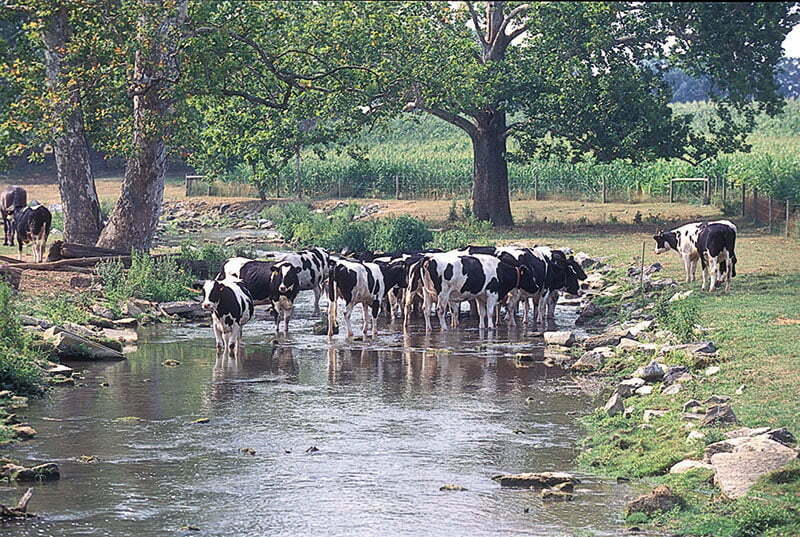
Impacts of cattle faeces
Cattle that graze close to riverbanks increase human risk of disease transmission as the erosion they cause means in high rain events more dirt and faeces flow into the water ways. This means the water requires more treatment to ensure it is safe for human consumption and the surrounding environment. A study on dairy cows in New Zealand (Devane et.al, 2020) discovered that every day a single cow defecates 11-16 times, and each ‘defecation event’ weighs between 1.5-2.7kg each. From this we estimate that a single cow can produce around 25-30kg of faeces every day. That’s a lot of poo!
Cattle manure harbours microscopic bugs and pathogens that pollute the environment and our waterways and infect humans and other animals. Cattle love to stand in water, and studies have shown that they can defecate five times more than their average defecation frequency when standing in a stream or pond, which means even more harmful bugs are flowing directly into waterways. Not only does the affected water make the cattle sick (by ingesting the parasites and pathogens that lead to disease), cattle standing in and around waterways destroys the surrounding fish habitat and riparian ecosystems as their hooves damage the riverbanks and soil.
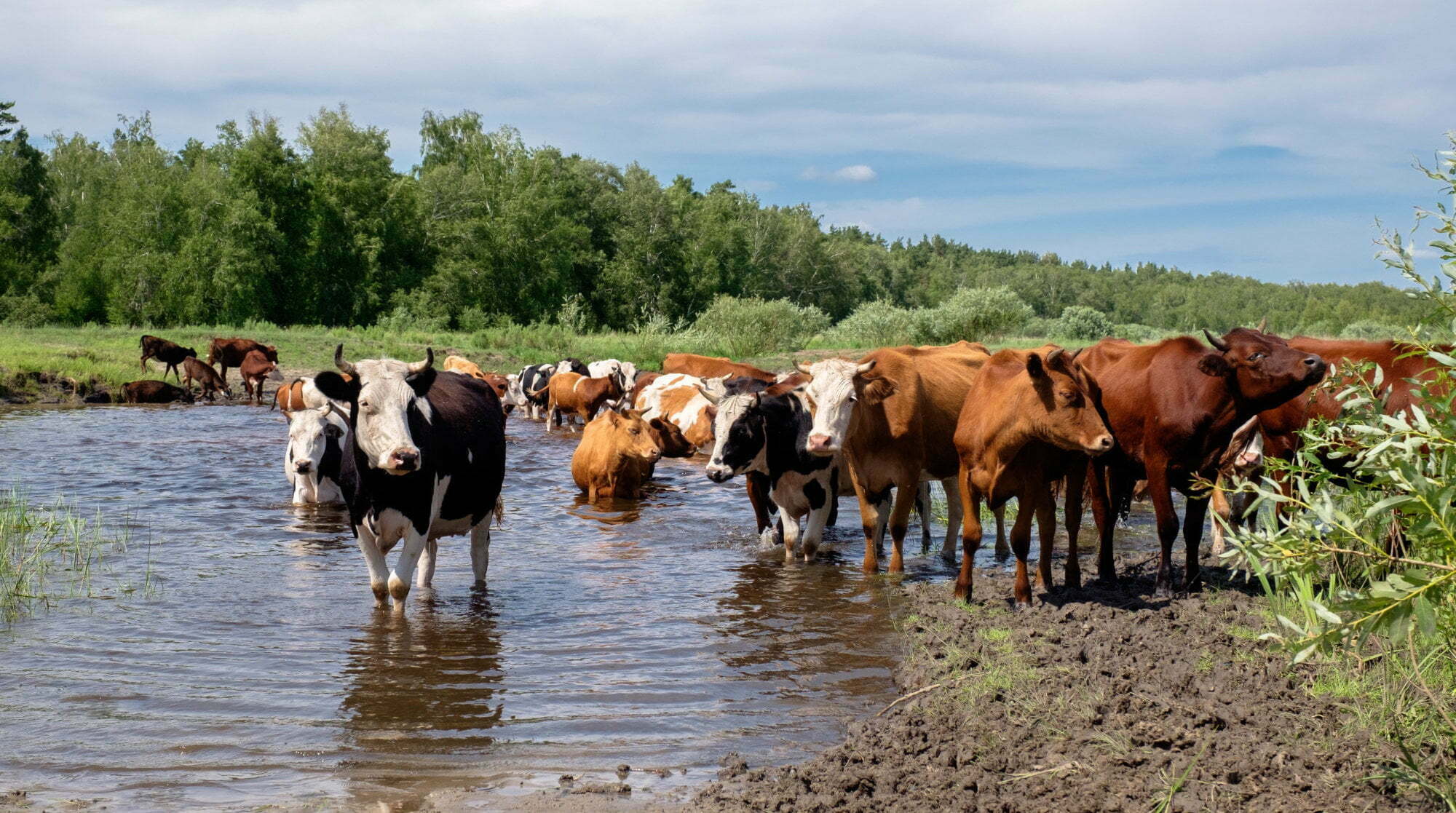
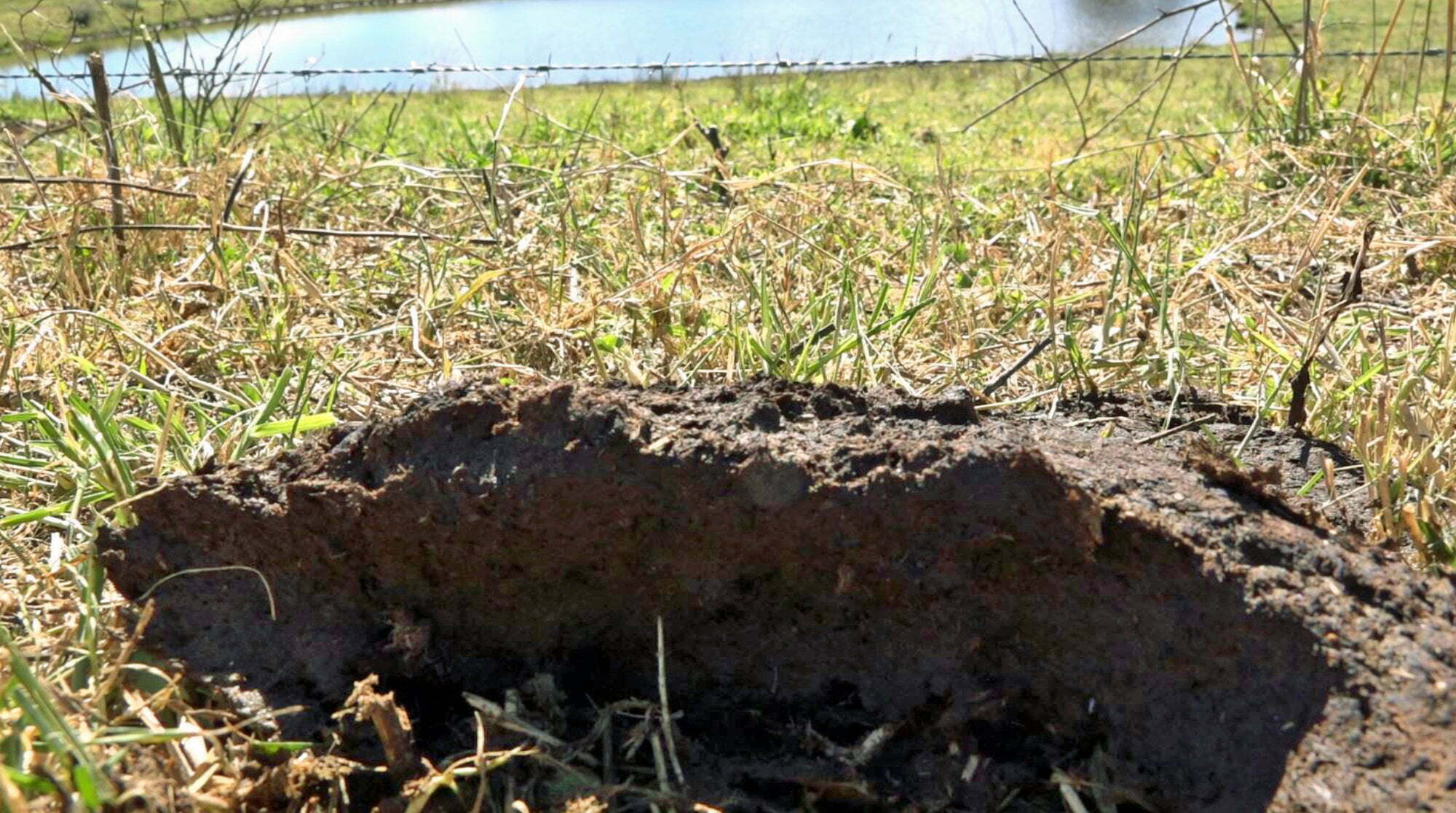
The table below (by Manyi-Loh et al, 2016) demonstrates the various pathogens found in cattle manure, their prevalence and survival rate, and diseases caused in humans. What is particularly interesting is the survival rate of these pathogens in faecal matter can be from 7 to almost 200 days (almost 7 months)!
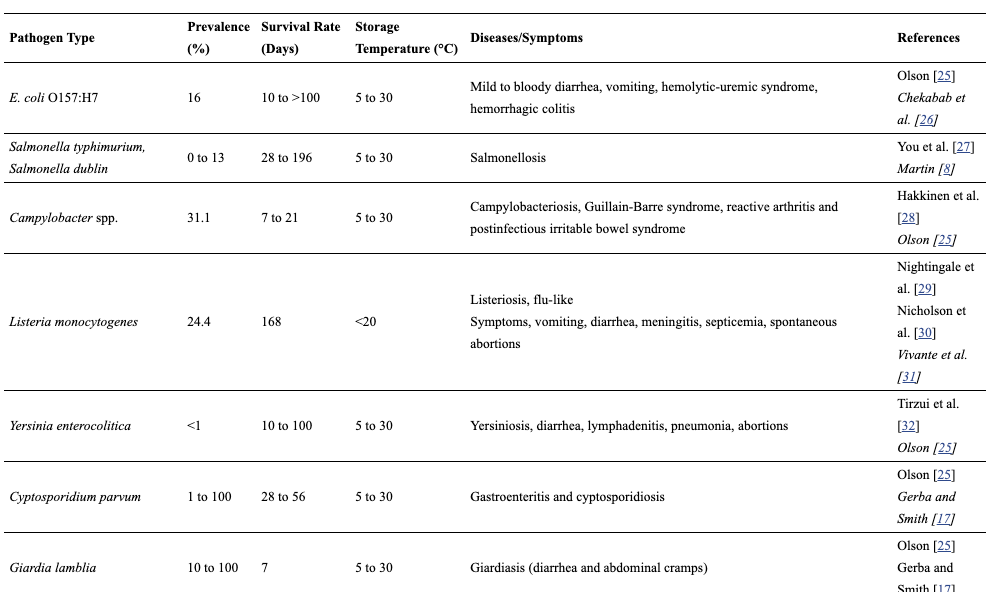
Native animal faeces
Although native animals faeces do contain pathogens, for example, kangaroo poo contains high quantities of E.coli, Campylobacter and Enterococcus, the actual rate of transmission to waterways is relatively insignificant compared to cattle. This is because of the high quantity of faeces produced by cattle, and hence the much higher abundance of pathogens. The abundance of pathogens and the size and type of the poo is highly dependent on the type of animal and what they have been eating.
Harmful bacteria are more likely to survive for a longer time in ‘slurry manure’ such as cattle poo. This contrasts with native animal poo which is often much smaller, harder and drier. Harmful pathogens are less likely to survive in these conditions compared to the wetter conditions in cow poo.
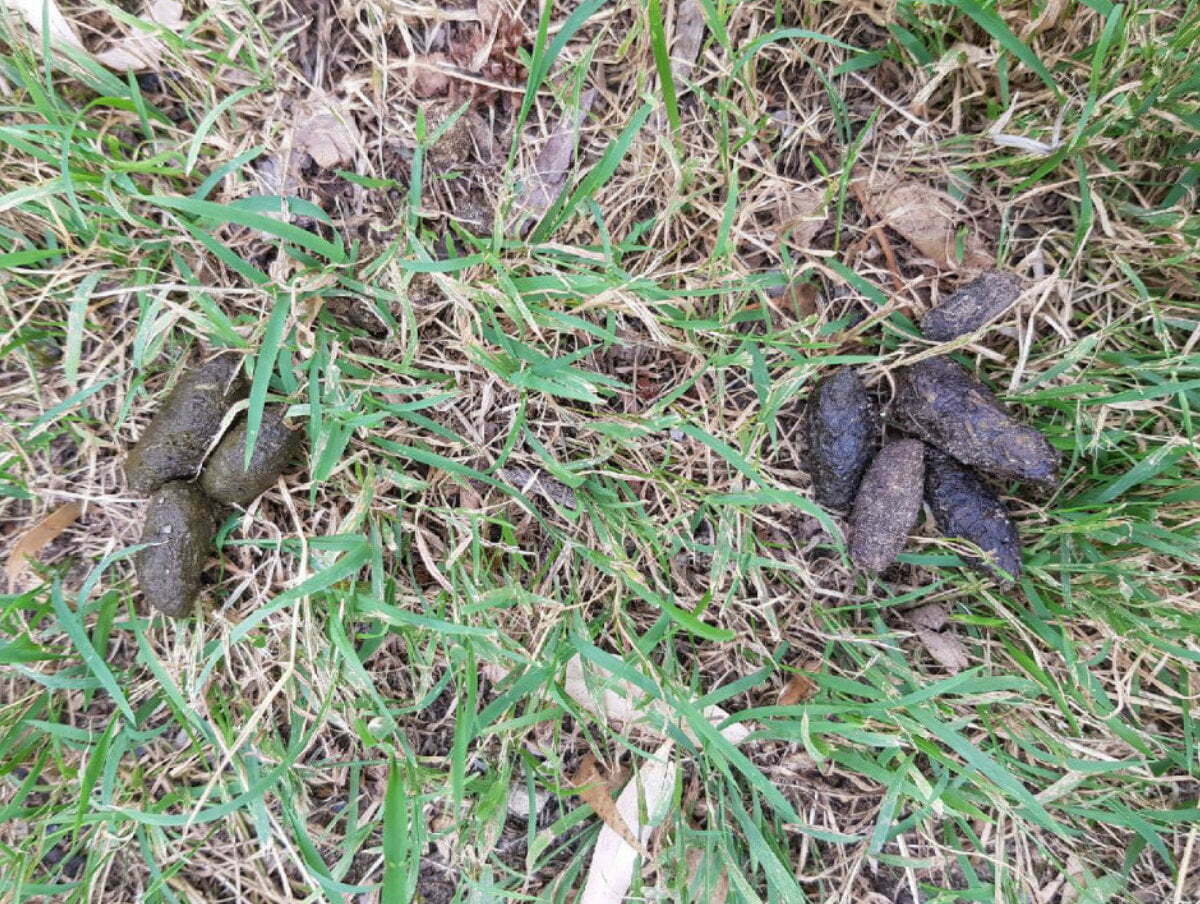
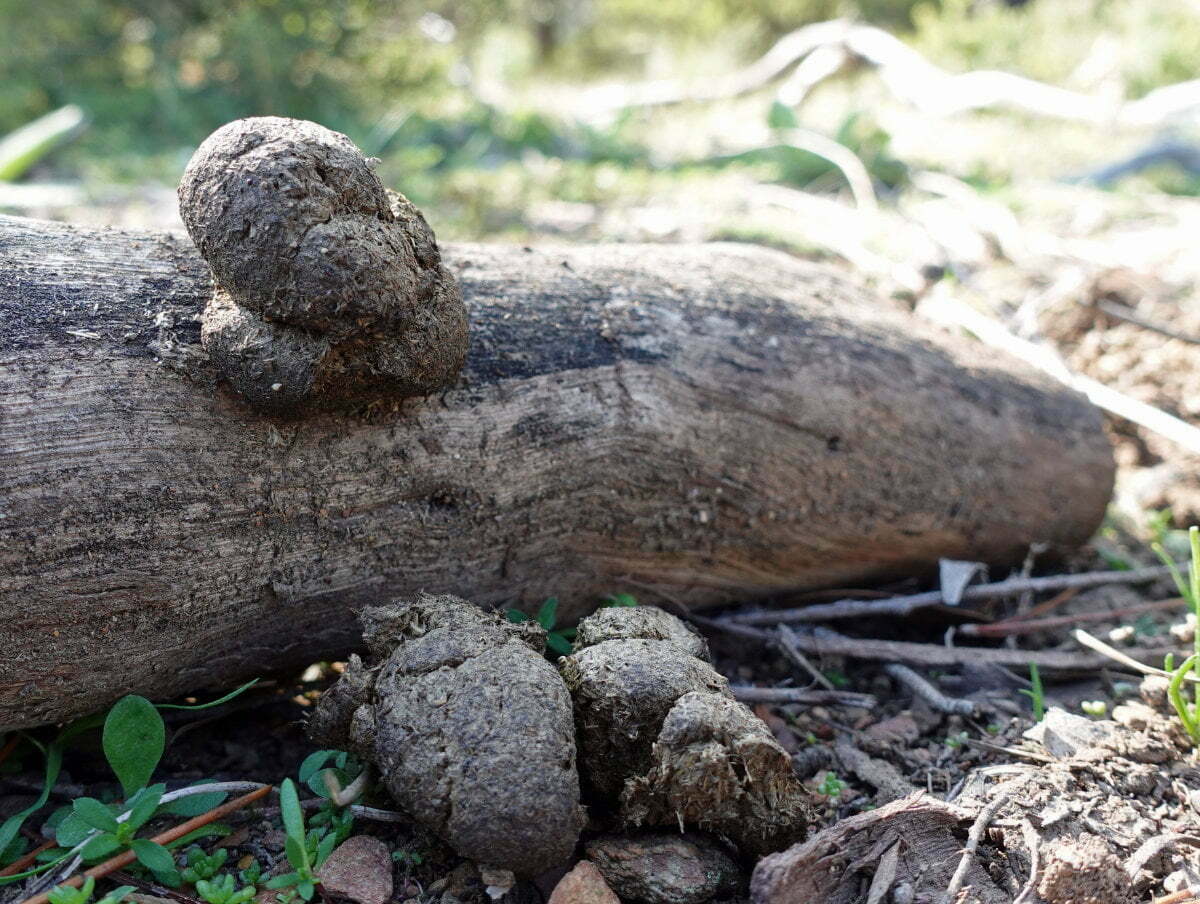
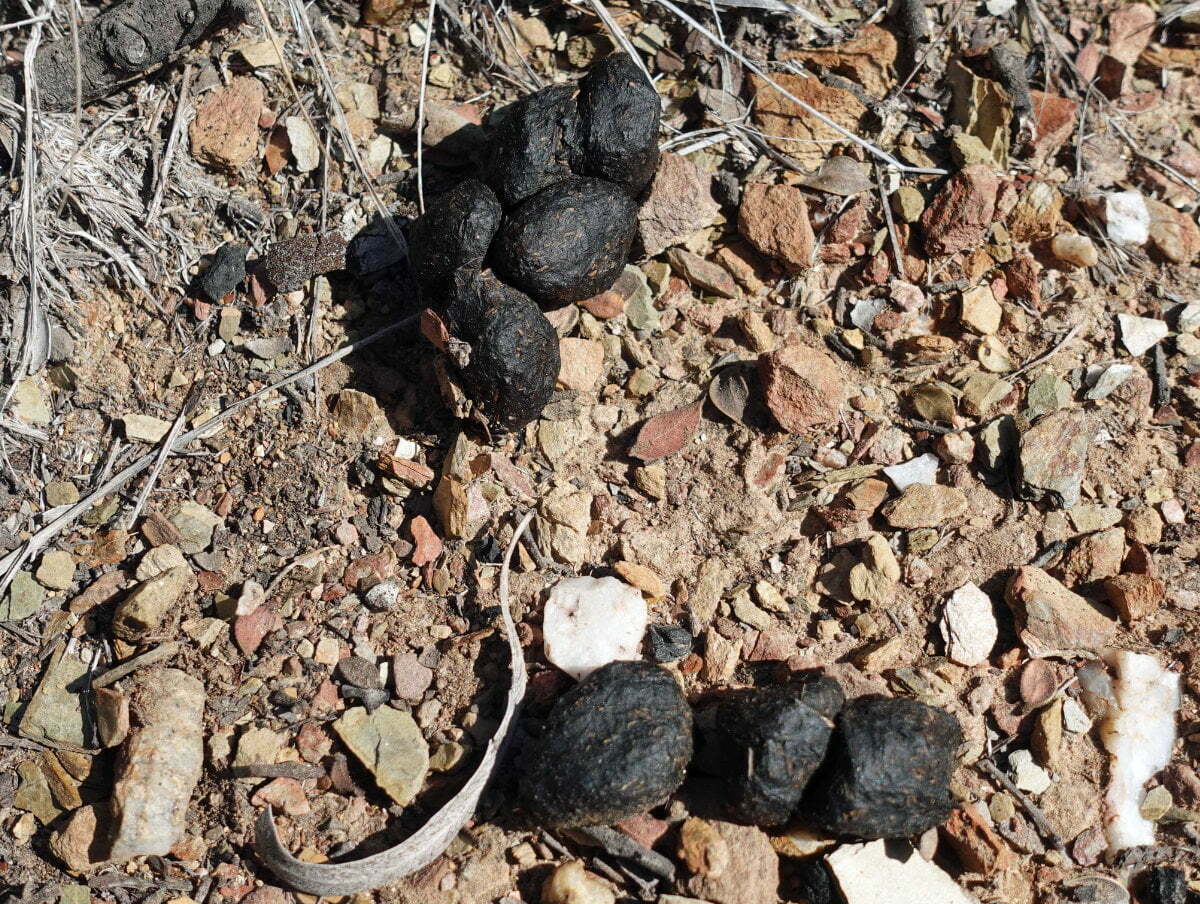
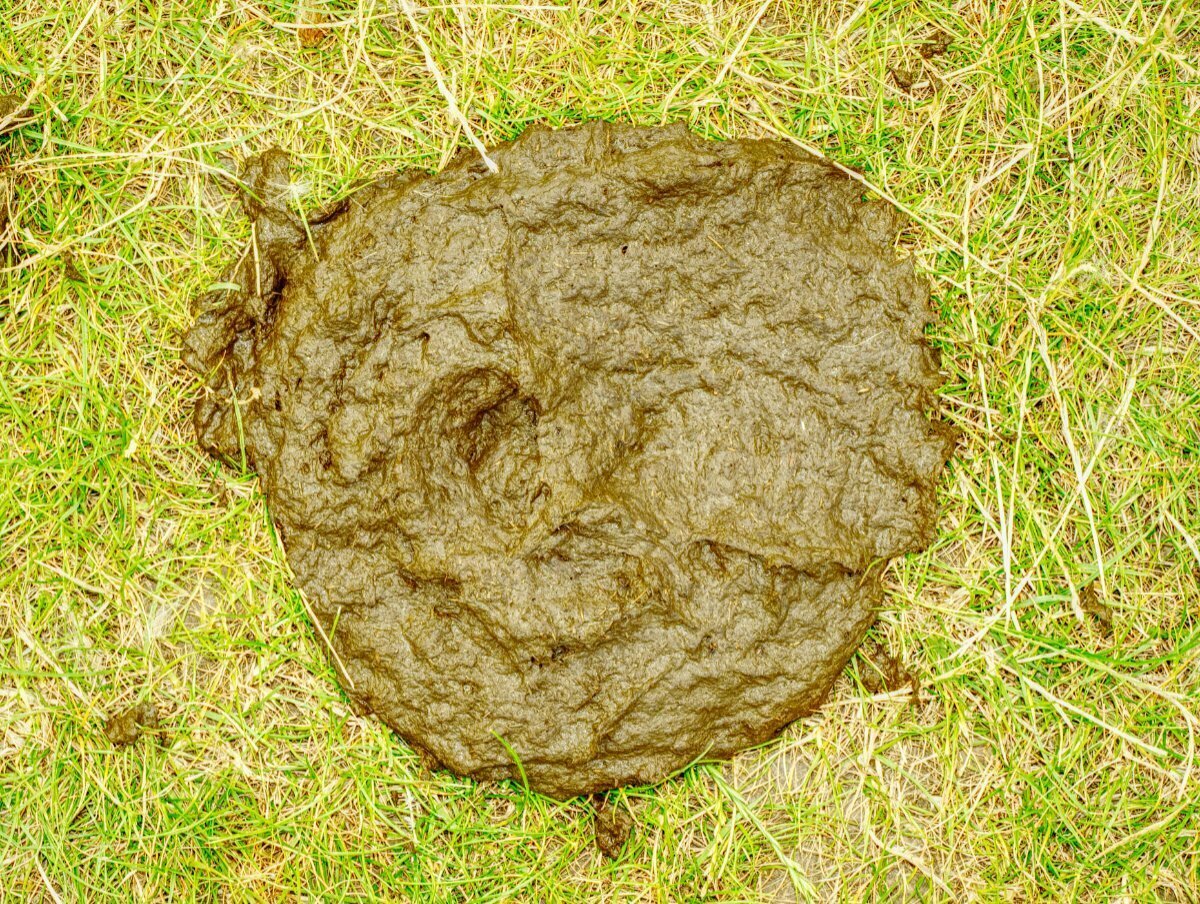
Moreover, cattle faeces are more likely to be transported into waterways and harbour the pathogens for a longer timeframe than native animals. Kangaroo poo is often around 1-3cm wide and is dry on the inside as the animal mainly eats grass and leaves. Similarly, wombat poo and koala poo are all much smaller than cattle poo, and much less likely to flow into waterways during rainfall events. Additionally, unlike cattle, native animals do not prefer to defecate in waterways.
Management for water quality
There are 3 keys ways to reduce pathogens and their impact:
1. Reducing quantities of pathogens in animals
Reducing the actual quantities of pathogens in cattle is an essential step to reducing their flow and impact on waterways. Spiehs and Goyal (2007) recommend “simple management practices” such as:
- Vaccines
- Adequate access to feed and water
- Appropriate space allowance
- Temperature and ventilation control
- On-farm sanitation and biosecurity measures
- Good animal husbandry practice
Specifically, Spiehs and Goyal recommend using slotted floors to decrease Salmonella. This is because on solid concrete or dirt floors, animals are continually exposed to the contaminated faeces. Whereas on a slotted floor, faeces will fall into an underground pit and reduce the exposure risk. By exposing the animals to less pathogens, their faeces is much less likely to contain large quantities of the pathogens which contaminate our waterways.
Other modifications, such as diet modifications in poultry have reduced the level of campylobacter and salmonella. Feed additives with microbials or “good bacteria” have also been proven to reduce some pathogenic strains of E.coli in cattle.
2. Implementing different manure collection and storage procedures
Collecting and storing manure is an effective way to prevent runoff into surface water (and groundwater). There are several methods for dealing with manure to reduce pathogen presence once it has been collected into a pile.
The first of these is a chemical method, using lime to stabilise and destroy pathogens. Lime substances such as calcium oxide or calcium hydroxide can be added to the manure pile to elevate the pH to 12 for around 2 hours. The high acidic pH level of the manure mix reduces odor and pathogens in the manure, is a cost-effective solution and can then be applied to land. One of the disadvantages of the lime solution is the large amount of waste produced after the treatment. The addition of large quantities of chemicals to the manure means transportation and waste removal costs will be increased.
Another chemical method for reducing pathogens in manure is hydrogen peroxide, which is an oxidising agent. Hydrogen peroxide destroys the cellular structures of bacteria when mixed with manure as it raises the pile’s pH to above 12. It also aids in odor and gas emission controls, however, the chemical can be both toxic to the environment if not used appropriately and costly to use in large quantities.
Other methods for reducing pathogen concentrations in cattle manure include heating or drying, and biological methods.
Pasteurisation of manure is a thermal process where the manure is heated, reducing bacterial pathogens. One of its problems is that it is difficult to eliminate spores of bacteria through this method. Spores are reproductive bodies produced by various pathogens when the organism is under stress, so it is resistant to adverse environmental conditions, and can withstand high temperatures. Spores can survive for a long time in suboptimal conditions and only require a return to their optimal conditions to grow into fully grown bacteria.
What is an oxidising agent?
An oxidising agent (like hydrogen peroxide) breaks down other cells and atoms (such as bacterial or viral pathogens) by absorbing their electrons, destroying their cellular structures.
Air-drying is a long-term option as it can take a minimum of three months to be effective depending on the environment and season it is taking place in. Air-drying involves drying manure on a sandy bed or paved basin to decompose and desicate. The basin needs to be away from a waterway to avoid the manure flowing into the water during rainfall events. Air-drying can also be used in conjunction with UV (sunlight), as this is another way to eliminate pathogens over time. The time needed for the pathogens to decompose depends on the survival rate of the pathogens in the cattle poo, which varies significantly (as seen in the above table by Manyi-Loh et al, 2016).
Lastly, there are some biological methods of reducing pathogens from manure, and allow the manure to be used as a source of nutrients and micronutrients to support crop growth and soil productivity. These nutrients include:
- Nitrogen
- Phosphorous
- Potassium
And the micronutrients could include:
- Zinc
- Copper
- Iron
One of these biological methods is anaerobic storage in tanks or lagoons. Anaerobic storage has been proven to reduce pathogen numbers, as most cells cannot survive without oxygen for more than 30 days, so both viral and bacterial pathogens are eliminated. This method will require a storage facility on high well-drained ground with concrete floor and a covered roof, that is far away from surface water. To ensure all the pathogens are eliminated, once the manure has been added, no new manure can be added for a certain period of time (could be up to six months depending on temperature). A study by Arthur et al (2010) also found that anaerobic digestion of manure produces biogas, which creates energy and has the potential to be harnessed into electricity with the right infrastructure. Biogas is a cleaner form of energy as it releases less carbon dioxide into the atmosphere and does not produce soot when burned. It is currently being used in the pig industry, and there is potential to be used for lower carbon footprint cattle farming.
Composting is another biological method which involves microorganisms breaking down the manure. The process generates heat, carbon dioxide and water vapour, and results in most pathogens being destroyed. The heat produced during this process can reach up to 66 degrees Celsius, and most pathogens can be destroyed at around 55 degrees Celsius. It is recommended to complete composting of manure twice to ensure all pathogens are eliminated. The microorganisms that do the composting require oxygen and nitrogen so this needs to be administered and managed to ensure they continue decomposing the pathogens.
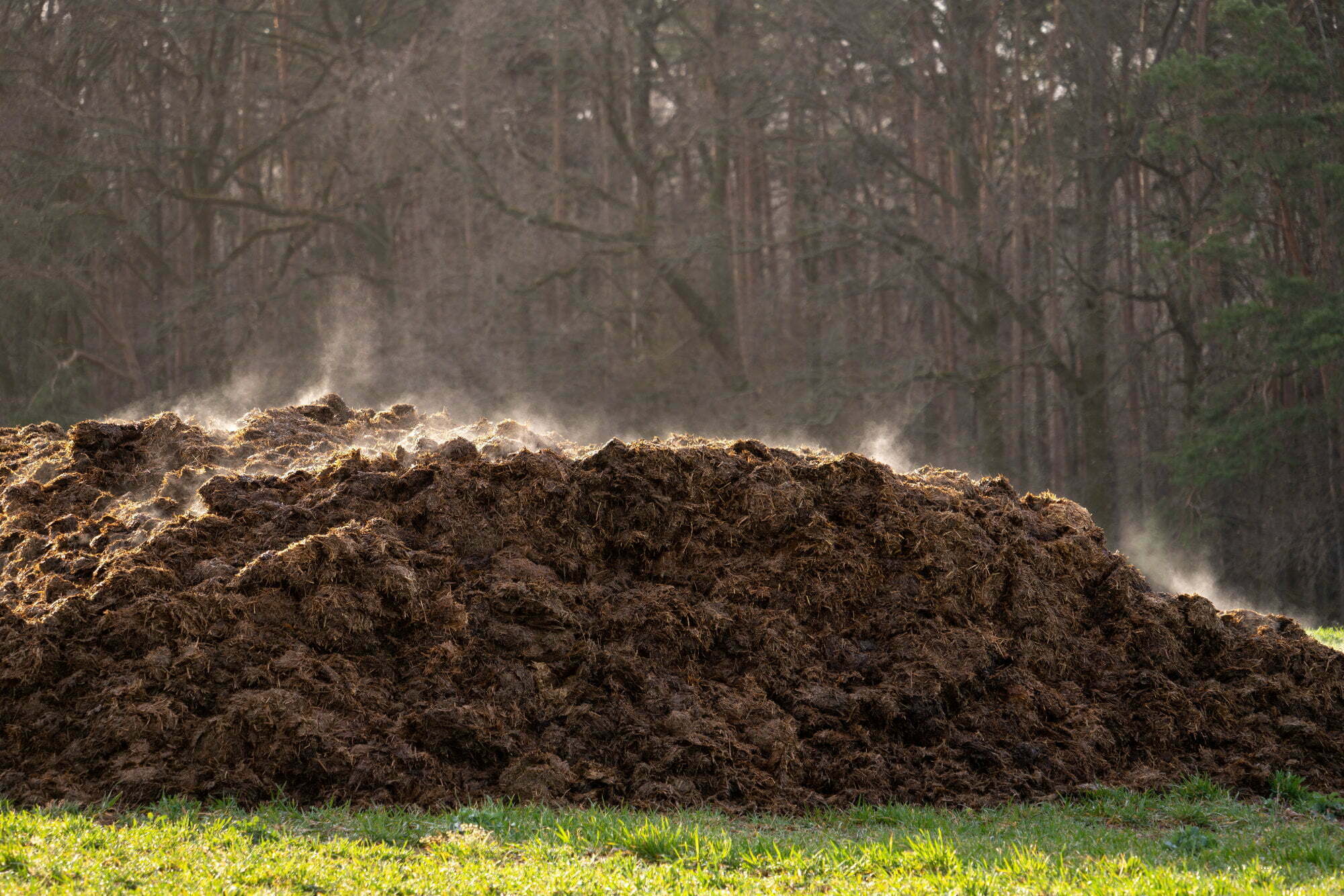
3. Implementing different land applications of manure
Altering how manure is applied to land can also reduce risk of pathogen transmission to water. The application rate and seasonal conditions are both important factors that contribute to how many pathogens reach nearby waterways. Fresh manure has a higher risk of contaminating waterways than stored manure when it is applied to a pasture. Leaving cattle faeces on a field (not collecting and storing it) is more likely to result in increased pathogen spread, as more flies can spread it, rainfall can transfer pathogens into waterways and there is increased odor and gas emissions.
What is the simplest method?
Well, keeping cattle away from waterways is the most effective way of reducing the negative impacts of faecal pathogen contamination in our water. This is why our Rivers of Carbon program works with landholders to control stock.
Riparian fencing and providing off-stream water is an effective way to do this, and more information on the best way to implement this on farms can be found at this Stock and Waterways Guide.
Main image: wombat poo. Photo credit: Richard Snashall.
